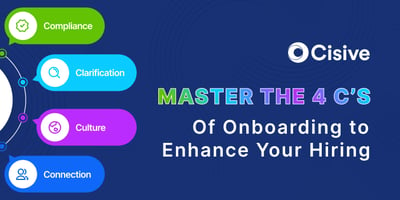

Most managers and HR departments have to deal with bad employees at some point. Understanding what...

The purpose of employee onboarding should be setting new hires up for success and decreasing the time it takes for them to become comfortable in their new roles and this works best if onboarding processes are designed strategically with the end goal in mind. However, the rise of remote and hybrid work, along with an increase in globally dispersed teams, has complicated the global employee onboarding experience.
While onboarding is a crucial part of new employee orientation and directly impacts engagement, retention and employee experience, only 12% of employees feel their company does a good job onboarding new employees, with 88% of workers reporting less-than-ideal onboarding experiences according to a Gallup report. The numbers look even worse for companies creating a global onboarding strategy for dispersed teams, something that has accelerated significantly since the pandemic began in 2020. In a 2021 survey from Principles, 94% of HR professionals said that people they’d hired during the pandemic have only interacted within the company virtually, and of those respondents, 31% said employees were struggling to connect with colleagues and 10% weren’t even sure how new hires were adapting.
According to Gallup’s onboarding report, employees who have a positive onboarding experience are almost three times as likely to feel prepared and supported in their role. Here, we’ll review some best practices for your global employee onboarding strategy that can help support this process internally and externally.
While the two seem at odds, there’s a good reason to work to achieve a balance. In order to ensure that each new employee can successfully onboard with your organization, it’s important that your onboarding process is consistent. However, when you’re setting up experience for global and dispersed teams, it may also be necessary to create a customized onboarding experience based on location, whether or not employees will work at a physical location or at their home office (or a combination of the two), cultural factors, and specific requirements for the role that they are taking on. Working with a vendor partner that can help you configure your onboarding as well as customize it for specific work teams or locations is key.
While paperwork and other necessary documentation must come first, onboarding doesn’t have to be a one- or two-day process, it could be spread across three days, five days, two weeks, or even longer. This helps to create a natural work structure for the new hire while they become familiar with your company and reduces the information overload that can be so common with new hires.
This can be a highly effective way of reducing “first day” stress before your new hires even begin orientation is to get them fully engaged with the company. This can get the paperwork out of the way and offering access to your internal employee site as soon as the offer is accepted is a great way to get new hires acclimated quickly. This should be a destination for incoming new employees to find everything they need to know about working at your company, including standard operating procedures, what technology the company uses (such as performance tracking apps and communication tools), company values and culture
If your company conducts exit interviews or surveys, but hasn’t set up a process to collect employee feedback as soon as onboarding begins, a huge piece of the employee satisfaction puzzle is missing. While exit surveys are common, it’s imperative to capture your company’s areas of weakness well before an employee decides to leave. One of the most obvious (and beneficial) ways to improve your onboarding program with data is to survey your new hires that went through your new hire training after 1, 6 and 12 months have gone by. Use that survey data to identify the program components that worked, those that need improvement and those that need to be added.
If you pair your new hire with a team member who is culturally matched and a positive role model, they will have someone to turn to to ask questions they might not ask their hiring manager or HR. When hiring globally, it’s important to choose a colleague who can help make the new employee feel comfortable asking about the culture and team.
Finally, an effective onboarding strategy can be one of the most fundamental factors that go into securing your company’s success, generating a positive return on employee investment, and ensuring your workforce is knowledgeable and motivated.
Cisive Exchange simplifies your onboarding and offboarding tasks for your employees and automates the process to maximize engagement, plus it is highly configurable and scalable so you can adapt as your company grows and changes.

Most managers and HR departments have to deal with bad employees at some point. Understanding what...

The 4 C’s of onboarding help companies minimize costs associated with new hire training by...

The healthcare workplace has long been plagued by a shortage of qualified workers and an employee...